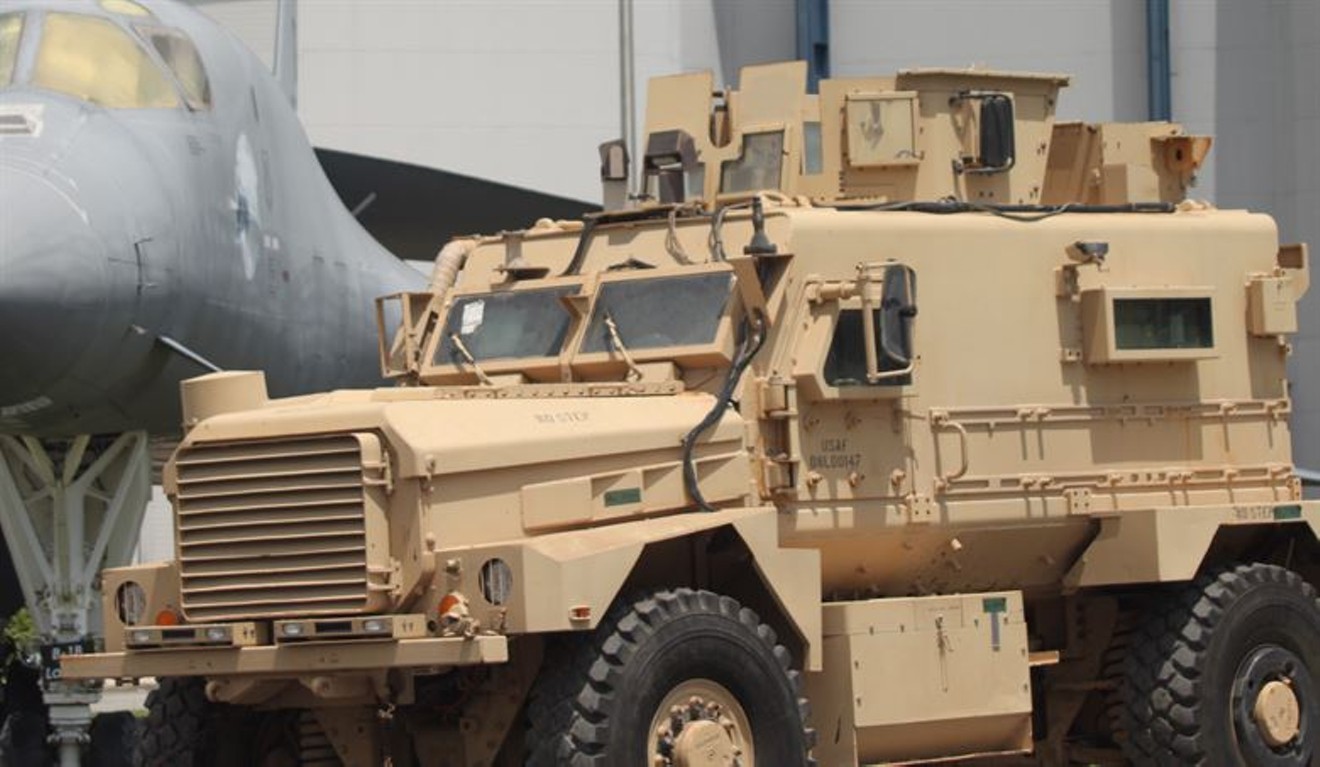As organizers in Dallas and throughout the country call for police reform, many activists are focusing on militarization and the use of force. Budget cuts aren’t enough, advocates say: Real reform can only happen if cities spend less on law enforcement and more on job programs, homelessness resources and funding for professional counselors.
“Some of these reforms that are focused on the police are simply harm-reduction interventions,” says Sara Mokuria, the Dallas-based cofounder of Mothers Against Police Brutality. “It’s like applying pressure to a bleeding wound; that alone won’t heal the wound.”
For the Dallas County Sheriff’s Office and many other law enforcement entities scattered throughout North Texas, use of force is inextricably tied to an initiative that has little impact on policing budgets: the Department of Defense 1033 program.
That program, which is now part of pending legislation in Congress, has brought nearly $150 million worth of military equipment to Texas, dozens of millions of which has wound up in the suburbs surrounding Dallas.
While Dallas groups like Our City Our Future, of which Mokuria is a member, are calling on the city to change its use of force policy, departments like the Sheriff’s Office are re-evaluating this controversial program.
"[The 1033 program] is a topic up for discussion in the near future on how the Sheriff’s Office will proceed concerning this matter," spokesman Paul Reyna says. "No discussion has taken place yet, but it is something that will be discussed soon."
The 1033 program allows for the transfer of surplus military equipment to police departments across the country. Suburbs like Southlake, Mansfield, Bedford and Benbrook can and do own “mine-resistant vehicles” that cost nearly $1 million each, but they got them on the cheap; they just had to pay for shipping.
The program was launched in 1997 but didn’t draw significant scrutiny until the Ferguson, Missouri, protests in 2014. While protestors called for justice for Michael Brown, a Black teenager gunned down by a white police officer, Americans across the country got a clear demonstration of the 1033 program’s power. Clad in full body armor and hoisting high-powered rifles, Ferguson police officers roamed the streets of Middle America in armored personnel carriers akin to those often seen in the Middle East.
A year later, then-President Barack Obama signed an executive order that barred police from using the 1033 program to obtain weapons like grenade launchers. President Donald Trump lifted those restrictions in 2017, the same year that a government investigation unmasked just how easy it was for any law enforcement entity to receive weapons with few questions asked. According to their report, Government Accountability Office personnel posing as cops obtained over $1.2 million worth of weapons. That haul included silencers and pipe bombs. Real cops, including many in Texas, have used the same system to obtain their own arsenals.
Cut and Shoot, a town of roughly 1,300 people about 40 miles north of Houston, has more assault rifles (seven) than it does full-time police officers (three). A county official in another small Texas town, who asked to remain anonymous, admitted that the employees frequently “play with” the equipment that winds up in their hands. The North Texas suburbs are much bigger than Cut and Shoot, but so are their stashes of weapons.Cut and Shoot, a town of roughly 1,300 people about 40 miles north of Houston, has more assault rifles (seven) than it does full-time police officers (three).
tweet this
The sheriff in Denton County has his own cache of assault rifles, as do police departments in Frisco, DeSoto and Grand Prairie. Records show that the Dallas County Sheriff’s Office carries a large supply of assault rifles — including many M14s and M16s — and their own mine-resistant vehicle.
U.S. Rep. Karen Bass, a Democrat from California, took aim at the 1033 program in the George Floyd Justice in Policing Act of 2020. Among other objectives, her bill aims to stop weapons like assault rifles from reaching police departments. Meanwhile, organizers like Mokuria are hoping to enact significant reform in Dallas. Mokuria, whose Black father was killed by a white DPD officer in 1992, is part of a group that has drafted a list of budget and police demands for the city of Dallas. A spokesman for Our City Our Future said the organization is actively recruiting ambassadors to help explain how a city budget works and “help them shape their vision of what an ideal Dallas budget could be.”
The 1033 program is unique in that it represents a small fraction of any departments' budget. Its proponents say it gives officers a chance to get essential office and safety equipment. Data, however, indicates that more military equipment leads police officers to be more violent. In 2017, a data analyst from Stanford University teamed with a political scientist from the University of Cincinnati to complete a detailed study on use of force by police. They determined that obtaining military weapons and using military language “makes police more likely to turn to violence to solve problems.”
If military weapons do indeed stop flooding the suburbs, it may not come from a congressional mandate. Bass’ bill passed in the House, but prognosticators worry that it won’t pass in the Senate. Instead, police departments and sheriff’s offices may have to decide for themselves when and if they choose to stop participating in the 1033 program.
Even though some of these North Texas towns don’t participate in the 1033 program, advocates still express concern about the larger issue of police militarization. And, as the Stanford/Cincinnati study indicates, “Militarization makes every problem — even a car of teenagers driving away from a party — look like a nail that should be hit with an AR-15 hammer.”











